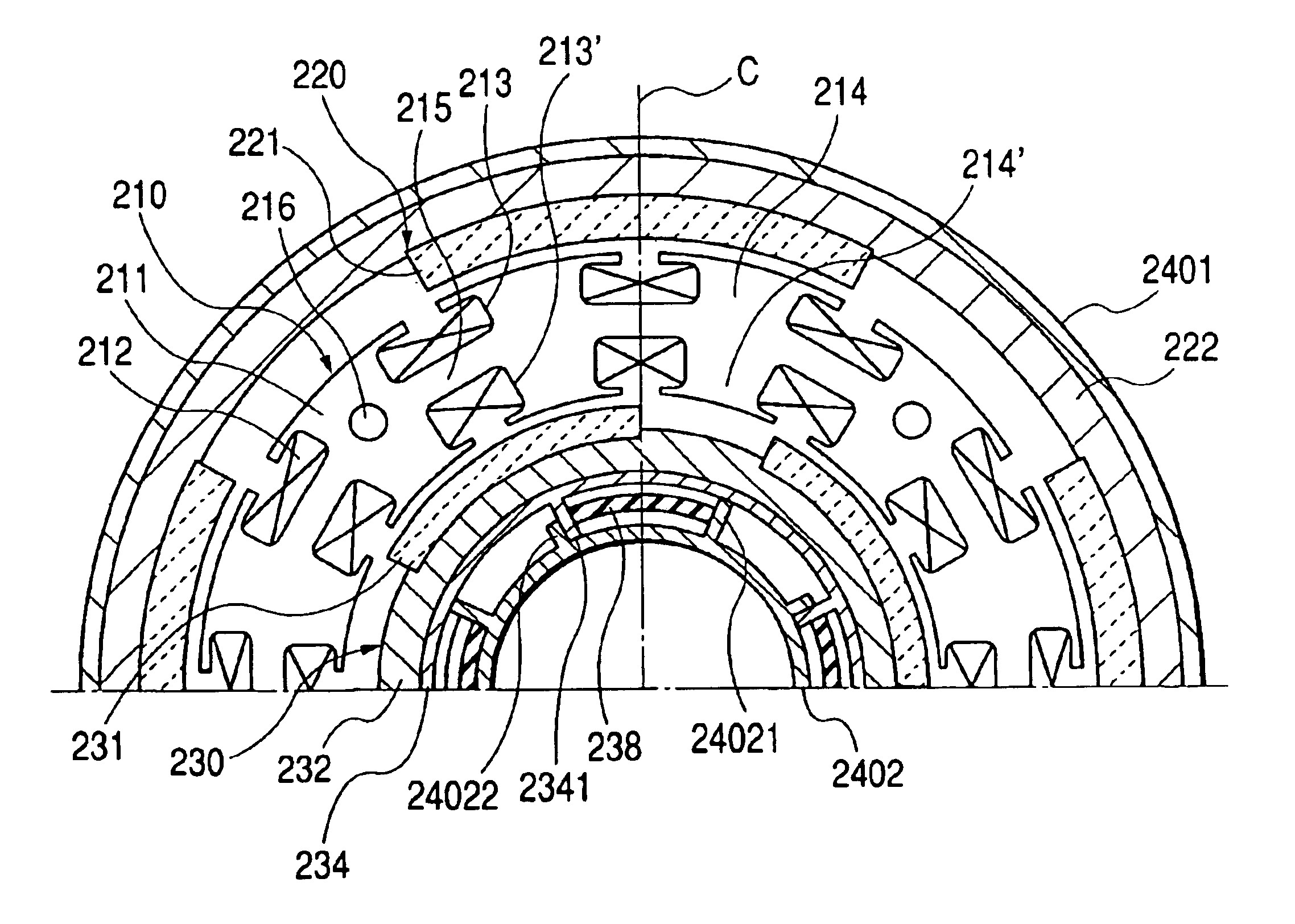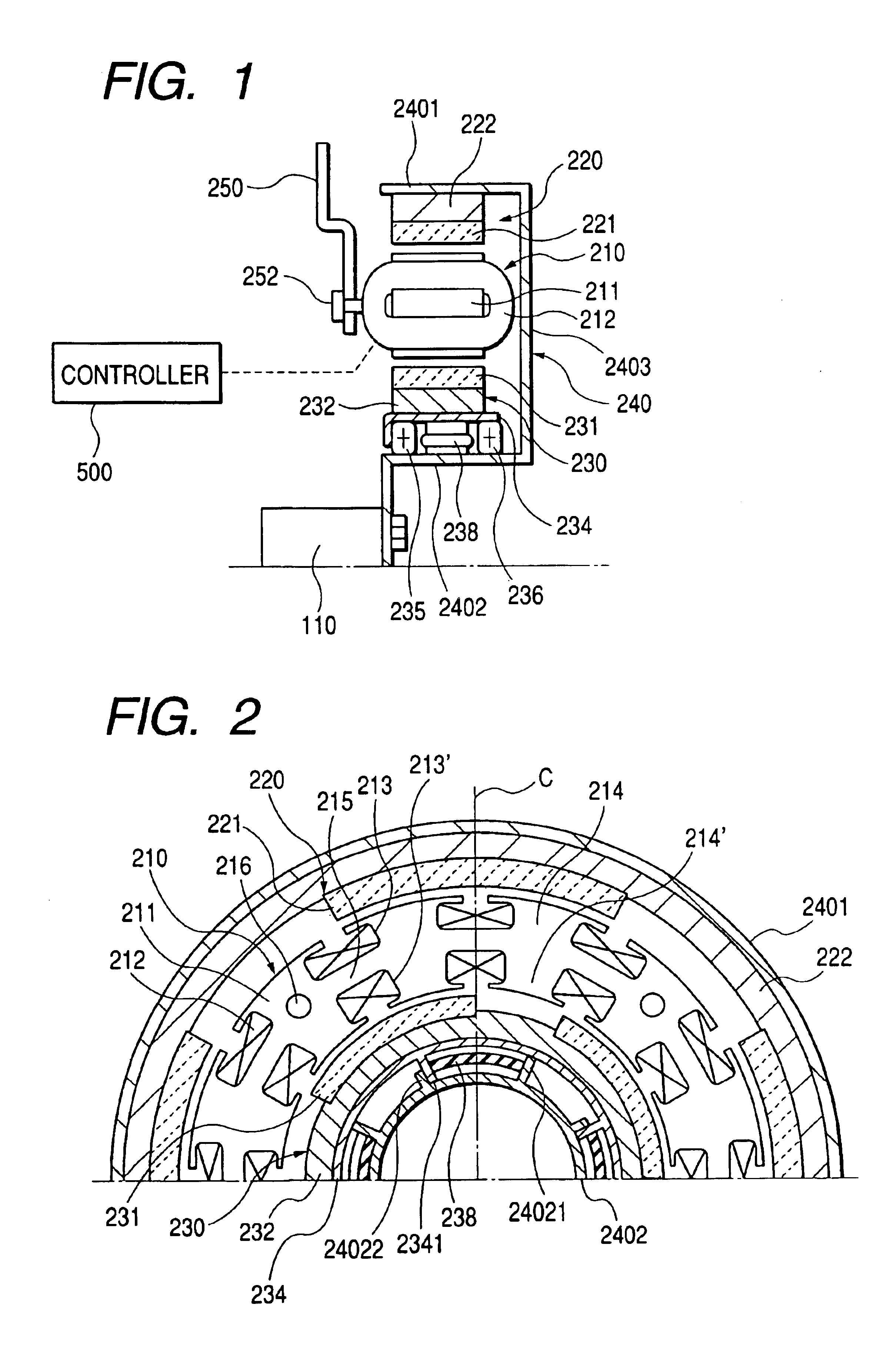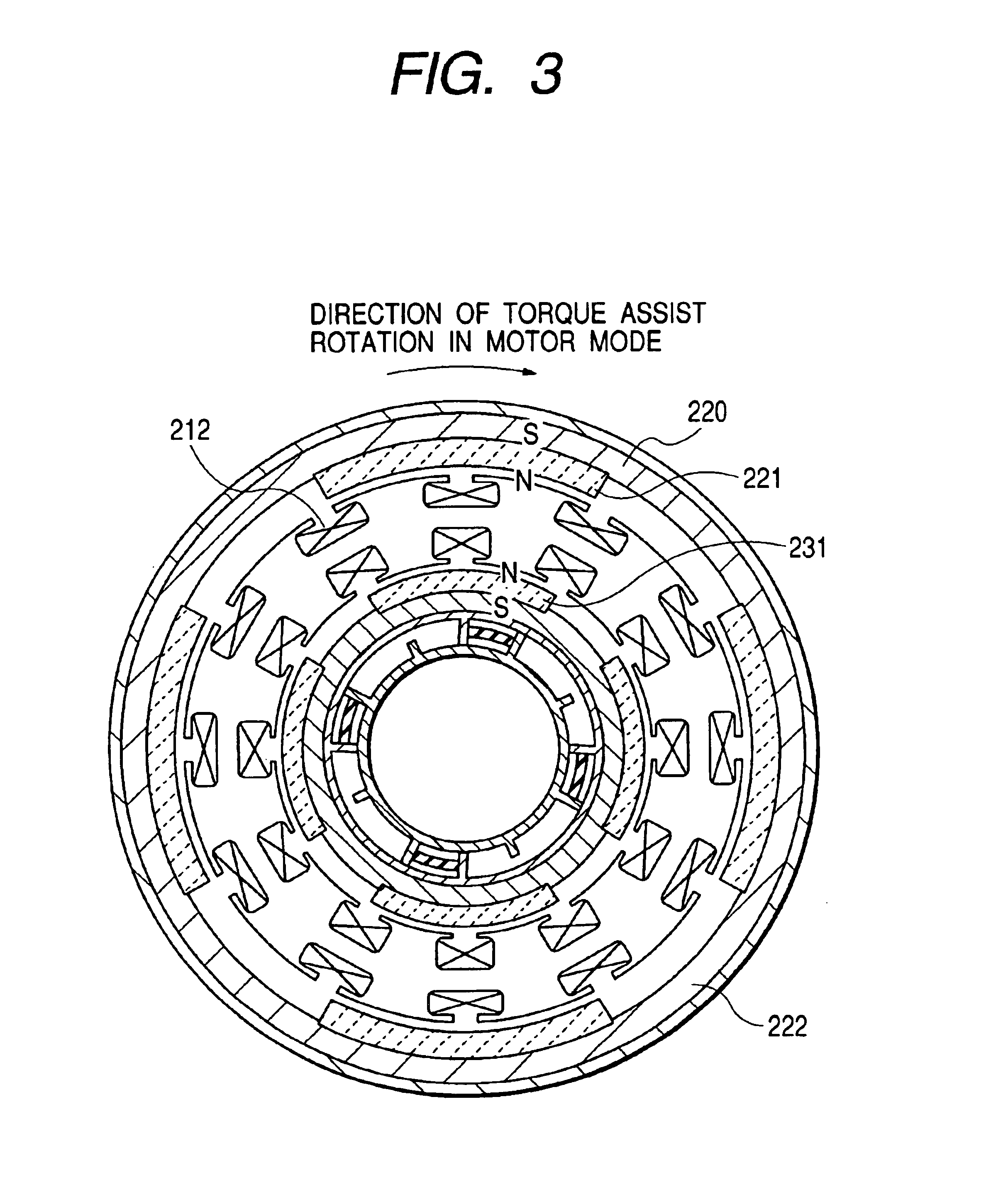Multi-rotor synchronous machine permitting relative movement between rotors
a synchronous machine and rotor technology, applied in the direction of engine starters, magnetic circuit rotating parts, magnetic circuit shape/form/construction, etc., can solve the problems of increasing the overall length of the power train, complex structure, and excessive armature winding-induced voltage applied to semiconductor elements, etc., to achieve high reliability levels
- Summary
- Abstract
- Description
- Claims
- Application Information
AI Technical Summary
Benefits of technology
Problems solved by technology
Method used
Image
Examples
first embodiment
[0074]Referring to the drawings, wherein like reference numbers refer to like parts in several views, particularly to FIGS. 1 and 2, there is shown a multi-rotor synchronous machine according to the invention. The following discussion will refer to an example in which the multi-rotor synchronous machine is used as a dynamo electric machine or generator / motor for automotive vehicles such as hybrid vehicles.
[0075]The synchronous machine includes generally a stator 210, an outer rotor 220, an inner rotor 230, a rotor support frame 240, and a stator support frame 250.
[0076]The stator 210 consists of a hollow cylindrical stator core 211 disposed within an annular gap between the outer rotor 220 and the inner rotor 230 coaxially therewith and armature coils 212 magnetically coupling with the rotors 220 and 230.
[0077]The stator core 211 is made of a lamination of a plurality of magnetic discs laid to overlap each other in an axial direction of the synchronous machine. The stator core 211, ...
third embodiment
[0134]FIG. 27 shows a multi-rotor synchronous machine according to the invention. The same reference numbers as employed in the above embodiments will refer to the same parts, and explanation thereof in detail will be omitted here.
second embodiment
[0135]The multi-rotor synchronous machine of this embodiment has substantially the same structure as described in the Specifically, stator windings 212 (i.e., armature coils) are arrayed in a magnetic core 211 of a stator 210. Each stator winding 212 consists of a conductor shaped to form a number of loops or turns each of which extends from a front surface of the magnetic core 211 into one of slots 213′ perpendicular to the drawing of FIG. 27, passes over a back surface of the core back 215, enters one of slots 213, and returns back to a front surface of the magnetic core 211. The armature coils 212 arrayed at a three-slot interval away from each other are coupled to form one of three-phase windings.
[0136]The multi-rotor synchronous machine also includes an outer rotor 220 and an inner rotor 230. Magnets 221 and 231 are secured on the outer and inner rotors 220 and 230.
[0137]A rotor support stay 240 is connected to a crankshaft 110 of the engine. A magnetic core 211 is installed o...
PUM
 Login to View More
Login to View More Abstract
Description
Claims
Application Information
 Login to View More
Login to View More - R&D
- Intellectual Property
- Life Sciences
- Materials
- Tech Scout
- Unparalleled Data Quality
- Higher Quality Content
- 60% Fewer Hallucinations
Browse by: Latest US Patents, China's latest patents, Technical Efficacy Thesaurus, Application Domain, Technology Topic, Popular Technical Reports.
© 2025 PatSnap. All rights reserved.Legal|Privacy policy|Modern Slavery Act Transparency Statement|Sitemap|About US| Contact US: help@patsnap.com



